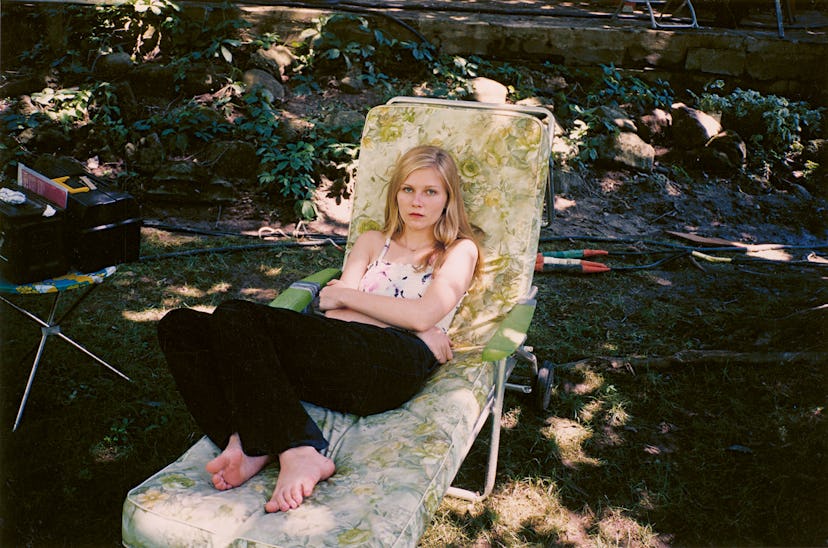How The Virgin Suicides Captured the Grit and Grace of Girlhood
British fashion photographer Corinne Day’s never-before-seen shots offer a haunting glimpse behind the scenes of Sofia Coppola’s timeless first film.

The dreamy chaos, quiet beauty, and teenage longing of Sofia Coppola’s first movie has captivated audiences for over 25 years—and rightfully so. The Virgin Suicides, Coppola’s haunting directorial debut, is a lyrical exploration of girlhood, repression, and the fickle nature of memory. Adapting Jeffrey Eugenides’s novel with a distinctly feminine gaze, Coppola transforms a suburban tragedy into a meditation on the mysteries of adolescence. Through gauzy visuals and quiet emotional depth, the film unpacks the societal forces that confine young women. As both screenwriter and director, Coppola brings an empathetic, interior perspective—establishing herself as a vital voice in American cinema. The movie endures as a modern classic that reshaped how we see female adolescence on (and off) screen.
To mark the 25th anniversary of the film, MACK has released a revelatory photo book that brings together two distinct yet kindred artistic visions: Coppola, plus the British fashion photographer Corinne Day. In 1999, as the director began work on her first feature, she invited Day to join her on set. Known for her raw, unfiltered portraits of 1990s icons like Kate Moss, Day brought a sensibility that perfectly matched Coppola’s own: an interest in beauty without artifice, and a deep empathy for the complexities of girlhood. Edited from Day’s original negatives, the photographs in this volume offer a rare and unguarded look behind the scenes of a film that would become a cult classic.
For those unfamiliar with the movie, The Virgin Suicides tells the story of five teenage sisters growing up in a 1970s Michigan suburb, as remembered—and mythologized—by the neighborhood boys who were both captivated and confounded by them. Day’s images taken on set are not glossy or staged—they hum with a quiet intimacy, capturing the young actors between takes, lost in thought, or lounging under sun-dappled trees, draped in the delicate, symbolic details of the Lisbon sisters’ world: crucifixes, pink lace bras, homecoming dresses, and half-eaten toffee apples. These fragments echo the film’s atmosphere, and its aching blend of repression and fantasy, sex and death, innocence and desire.
This book is more than a companion to the film; it is a diary and a love letter to girlhood. Featuring new texts by Sofia Coppola and Jeffrey Eugenides, the tome opens a compelling dialogue between literature, cinema, and photography. Day’s images serve as both documentation and interpretation—offering viewers a way to experience the film anew, or perhaps for the first time, through still, contemplative moments. Below, a look into Coppola’s wistful, suburban world through Day’s lens.